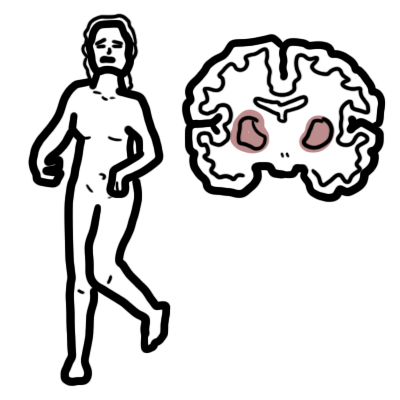Cerebral Palsy


Cerebral palsy is a non-Progressive neurological disorder. Usually with significant motor component. Clinical presentation overtime changes due to increased developmental challenges.Cerebral palsy (CP) is the most common physical disability in childhood. Prevalence is about 1 – 3/ 1000 live births. Cerebral palsy can affect:
Cerebral Palsy: Group of permanent disorders of the development of movement and posture, causing activity limitation, that are attributed to non-progressive disturbances that occurred in the developing fetal or infant brain
Dyskinesia: Abnormality or impairment of voluntary movement.
Akinesia: Loss or impairment of the power of voluntary movement.
Dystonia: A state of abnormal muscle tone resulting in muscular spasm and abnormal posture, typically due to neurological disease or a side effect of drug therapy.
Cerebral palsy can be classified according to the type of motor problem:
Cerebral palsy can be classified according to the distribution of motor disorder
The majority of cerebral palsy is not related to birth asphyxia.
Common clinical presentation:
Signs and symptoms according to motor disorder
In addition to motor manifestations, children with cerebral palsy frequently exhibit cognitive and sensory impairments, epilepsy, and nutritional deficiencies.
Intellectual impairment occurs in about two thirds of patients with cerebral palsy. About one half of pediatric patients have seizures. Growth problems are common, as well as neurologic abnormalities such as impaired vision or hearing and abnormal touch and pain perceptions.
Diagnosis of cerebral palsy is based on a clinical assessment, and not on laboratory testing or neuroimaging. Observation of slow motor development, abnormal muscle tone, and unusual posture are common initial clues to the diagnosis of cerebral palsy.
If differentials are suspected investigations may be ordered.
Associated impairments
Health Problems
Motor disorder
Prognosis
The number of adults with cerebral palsy is increasing because of increased survival of low birth weight infants and increased longevity of the adult population. Adult mobility and ability to perform activities of daily living should be routinely monitored as the patient ages.
Cerebral palsy is a chronic condition with no cure and as such the overall goal of treatment is to improve quality of life and participation in life situations. Management of cerebral palsy involves a disciplinary team:
Management of complications
Associated impairments
Health Problems
Motor disorder
Krigger., KW. (2006). Cerebral Palsy: An Overview. American Family Physician. 73(1). 91-100.
O’Shea, TM. (2011). Diagnosis, Treatment and Prevention of Cerebral Palsy in Near-Term/Term Infants. Clinical Obstetrics and Gynecology Journal. 51(4). 816-826.
Royal Children’s Hospital Melbourne

Please confirm you want to block this member.
You will no longer be able to:
Please allow a few minutes for this process to complete.
Discussion